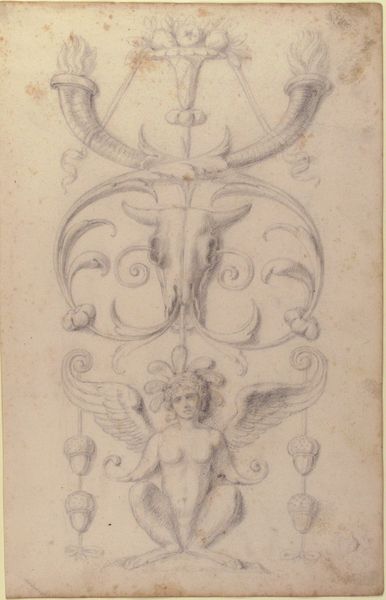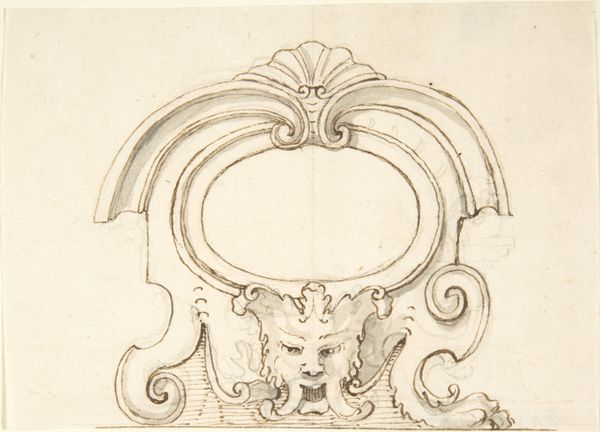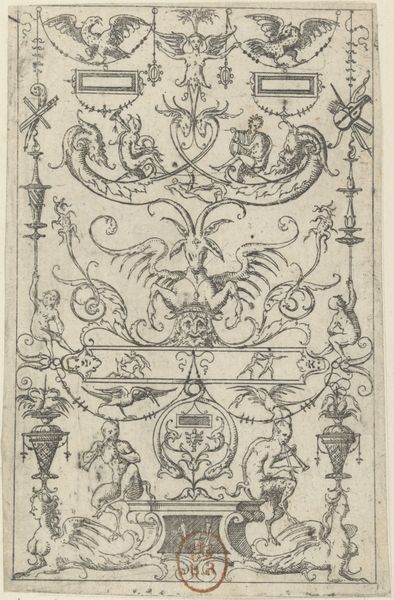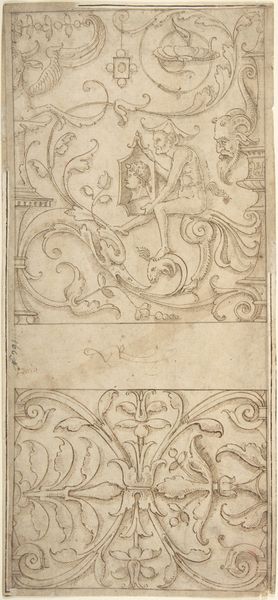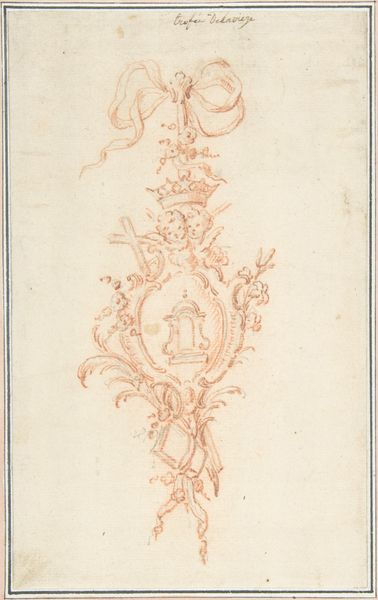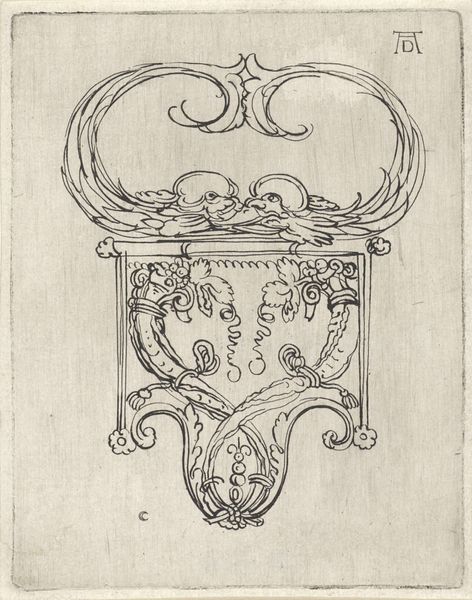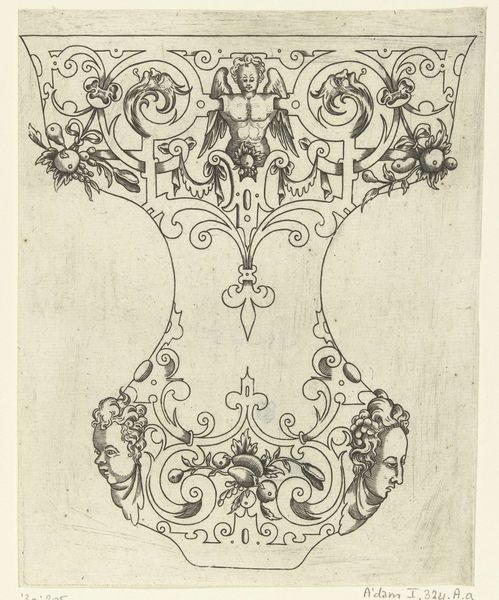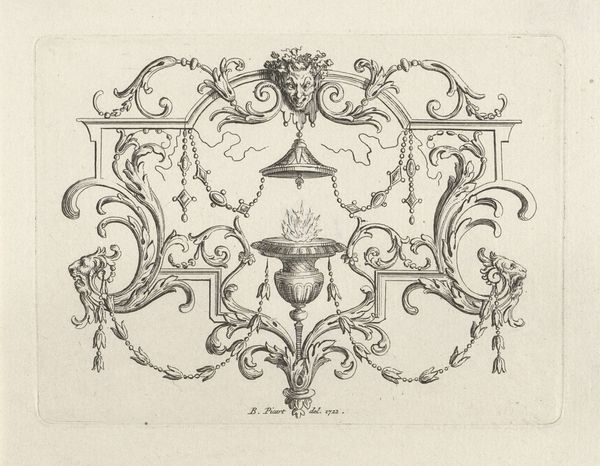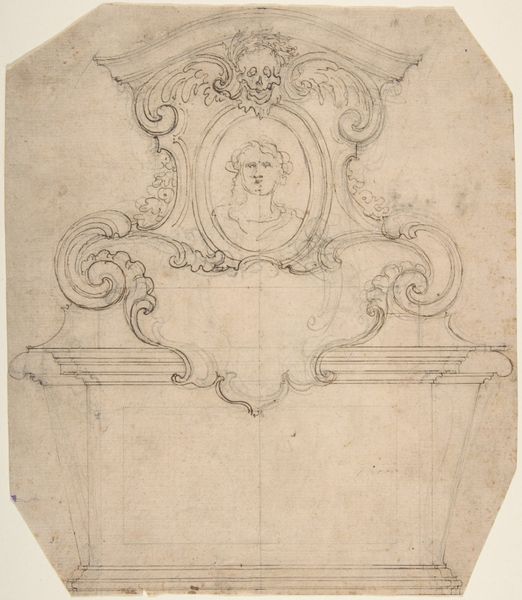
Drawing of a Grotesque after a 16th-century Decorative Relief. 1770 - 1830
0:00
0:00
drawing, pencil
#
drawing
#
neoclacissism
#
form
#
geometric
#
pencil
#
line
#
academic-art
Dimensions: sheet: 13 7/16 x 8 5/8 in. (34.2 x 21.9 cm)
Copyright: Public Domain
Curator: It’s intriguing, isn’t it? This drawing, held at the Metropolitan Museum, presents "Drawing of a Grotesque after a 16th-century Decorative Relief.” Scholars place its creation sometime between 1770 and 1830, and attributes it to Filippo Cretoni. Editor: Immediately, I'm struck by the sketchiness of the graphite, which somehow clashes and contrasts against what looks like rigid neoclassicism. You'd almost expect a sharper, cleaner line. I want to feel the weight of the implement in the hand that holds the pencil, trace that production back into time... Curator: Yes, look closer, it embodies a very linear approach—a devotion to form. It speaks volumes about the Neoclassical interest in revisiting, reimagining and recoding past artistic traditions, where clean, legible lines are supreme to guide the eye. Notice how it's built out of historical symbols too, right? Editor: Absolutely. You've got what seems to be an eagle, some torchieres, scrolls, and even a grotesque face centered within the structure, though they all have a bit of levity to them; a clear intention in choosing certain tools, and certain textures over others to capture its appearance on paper. Curator: Indeed, a catalogue of iconography, a parade of archetypes for anyone aware of the history and memory bound into visual culture. The eagle, often associated with power and empire, poised above what seems to be torches, perhaps referencing enlightenment…and a face that, though grotesque, is somewhat softened, tamed. Editor: The layout is striking – its top down arrangement resembles the artistic approach toward monumental architecture. This makes you think about where it sits, within what rooms, or maybe to be set amongst urban squares and structures, all that pencil and pressure. I want to feel those materials rubbing up against it too – marble and limestone maybe? Curator: The interplay of symbolism, from antiquity through the Renaissance, refined into the Neoclassical idiom makes for a layered experience that asks for slow and studied seeing to unpack all the social histories at play. Editor: To touch back on production, that relationship to craft makes this object stand out. A copy, or perhaps an exploratory sketch… its intention to inform some architectural form. Curator: Looking again with your points in mind has really reshaped my perception of this work. It's become richer, somehow. Editor: And seeing it through your iconographic lens shows how deeply the symbolic can still affect materials and methods even hundreds of years after its cultural value.
Comments
No comments
Be the first to comment and join the conversation on the ultimate creative platform.
